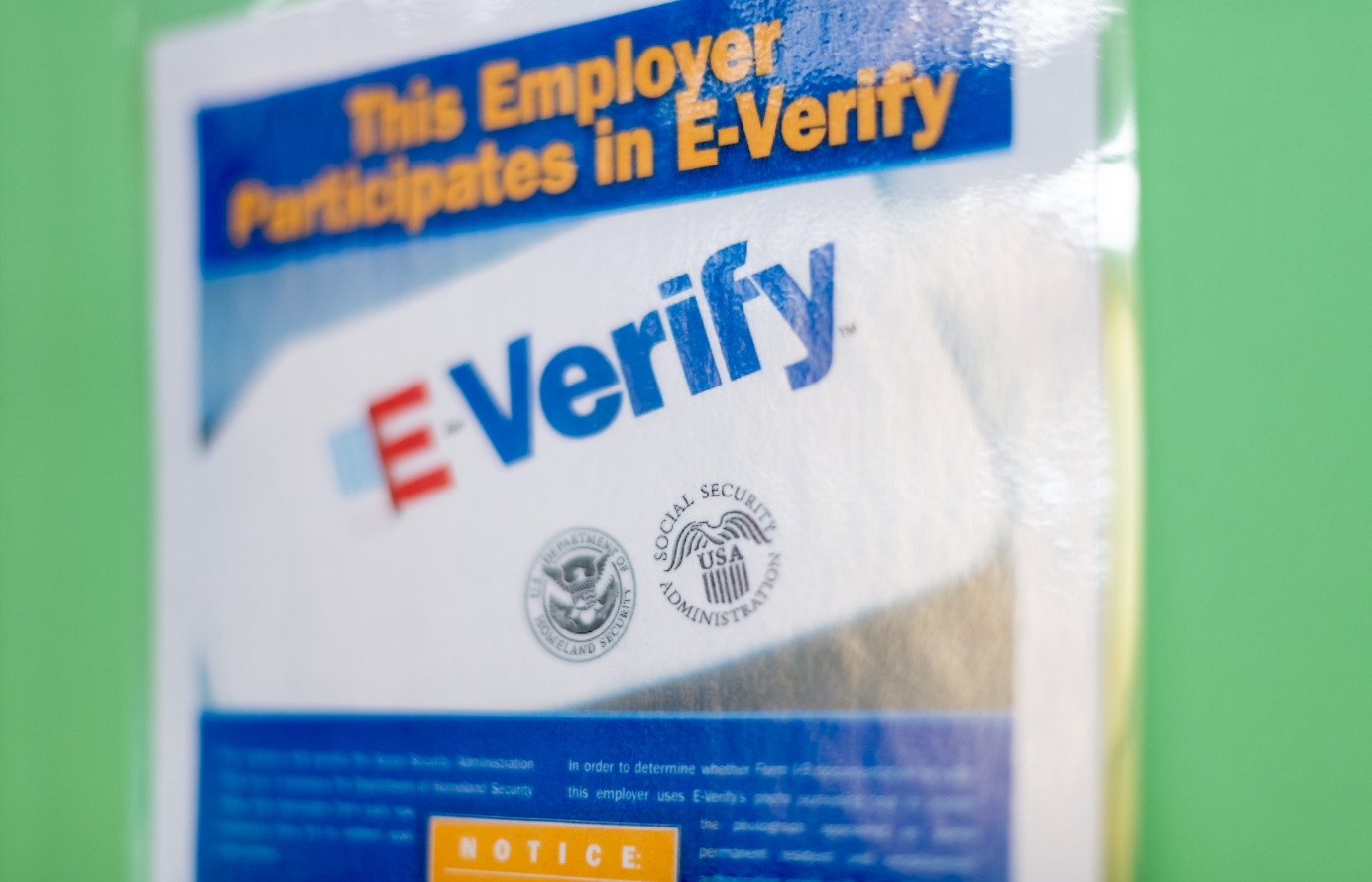It’s Time for Congress to Do Its Job on DACA
 DREAMers made headlines back in September when President Trump rescinded the executive order that created DACA, giving Congress six months to “do its job” by legislating a permanent resolution to allow the benefits of DACA to continue. Now, two and a half months later as that six month window continues to shrink, the need for an actual legislative solution for the DREAMers is only increasing. If nothing is passed, starting on March 5th, 2018, an estimated 1000 people who were raised and educated in America will lose protection from deportation every day.
DREAMers made headlines back in September when President Trump rescinded the executive order that created DACA, giving Congress six months to “do its job” by legislating a permanent resolution to allow the benefits of DACA to continue. Now, two and a half months later as that six month window continues to shrink, the need for an actual legislative solution for the DREAMers is only increasing. If nothing is passed, starting on March 5th, 2018, an estimated 1000 people who were raised and educated in America will lose protection from deportation every day.
DACA, which stands for Deferred Action for Childhood Arrivals, is a program that allows for unauthorized immigrants under the age of 31 as of June 15, 2012, who were brought to America younger than the age of sixteen and have been living here since 2007, to receive a renewable two-year period of legal residency, deferred action from deportation, and eligibility for a work permit. It was created through executive order to provide temporary protection for DREAMers while Congress legislates some type of permanent policy.
Considering the Majority of American constituents who have voiced their opinion feel that the DREAMers should be allowed to remain in the U.S., Congress needs to pass a permanent resolution. A recent poll conducted by Fox News found that “overwhelming majorities favor granting work permits (86 percent favor vs. 12 percent oppose) and U.S. citizenship (79-19 percent) to illegal immigrants under the age of 30 brought here as children, provided they pass a background check.” Even President Trump has implied that he wants congress to pass legislation that will allow the DREAMers to stay, stating that he does “not favor punishing children, most of whom are now adults, for the actions of their parents.” So, if the overwhelming majority of Americans support the legalization of the DREAMers, why hasn’t Congress done it already?
The problem is, after over 16 years of talking about a fix for the DREAMers, Congress has never been able to agree on a concrete solution. While most Democrats in Congress want the replacement for DACA to be a “clean” DREAM act, many Republicans are looking to utilize legal status for the DREAMers as leverage to include aspects in the bill that will deter illegal immigration, like funding for a wall or expedited deportation on visa overstays. It is important that Congress comes up with a legislative solution that adheres to our American principles as they are written in the Constitution, carries out the will of the American people, and ensures that we operate within a nation of laws. In anticipation of the possible seven months it could take for a legislative solution to be set up and implemented, activists from all across the political spectrum are advocating for Congress to pass a legislative solution to protect the DREAMers before the end of 2017.
Below are the bills that are being proposed by Congress to replace DACA:
Note that In order to gain and maintain eligibility for the conditional permanent residency that these programs provide, prospective recipients would be required to pass background checks and maintain an almost perfectly clean criminal record. Should recipients fail to pass a background check or be convicted of any significant misdemeanor, like crimes involving violence or any gang-related activity, they would lose their conditional permanent legal status and be subject to deportation.
DREAM Act
Short for Development, Relief, and Education of Alien Minors, the DREAM act has been around since 2001 when it was introduced by Senators Dick Durbin (D-IL) and Orrin Hatch (R-UT). In order to be eligible for the initial eight-year conditional permanent residency status it provides, recipients must have come to the United States under the age of 18 and have been present in the U.S. for four years prior to the bill’s enactment. After the eight years of conditional permanent residency, as long as they have either acquired a degree from an institution of higher education, completed two years in a bachelor’s program, served for at least two years in the uniformed services or been honorably discharged, or have been gainfully employed for at least 75% of the time during their conditional permanent residency, they will become eligible for a green card.
SUCCEED Act
Introduced by Senators Thom Tillis (R-NC), James Lankford (R-OK), and Orrin Hatch (R-UT) in September of 2017, the SUCCEED Act (Solution for Undocumented Children through Careers, Employment, Education, and Defending our Nation) has the most merit-based requirements out of any of the proposals and includes aspects to deter illegal immigration and chain migration. It has similar eligibility requirements to DACA in that it only applies to people who came to the United States younger than 16 before June 15, 2012, who have received or are earning a high school diploma. Its requirements are stricter though, in that it demands that recipients pay off any existing tax liabilities and sign a waiver from future immigration benefits should they violate certain terms of their status. After enrolling in the program, beneficiaries would receive conditional permanent residency status for five years. If during the first five years of enrollment the recipients adhere to one of the three merit-based tracks of serving in the military for at least three years, obtaining a postsecondary or vocational degree, or maintaining gainful employment for 46 out of 60 months, they would be approved for a second five year period of conditional permanent residency. After ten years of conditional permanent residency they would be issued a green card. To delay chain migration, this proposal also requires its recipients wait five years after getting a green card before being able to apply for naturalization or petition for close relatives such as spouse or children to obtain permanent residency. In order to curb the estimated 40% of illegal immigration that occurs from visa overstays, the proposal also contains a provision that would require people who come to the United States on work or student visas to sign a waiver relinquishing their rights to an immigration hearing and other immigration benefits should they violate the terms of their visa.
Recognizing America’s Children Act
Sponsored by Representative Carlos Curbelo (R-FL) in March of 2017, The Recognizing America’s Children Act requires that its recipients entered the United States before age 16 and that they have lived continuously in the U.S. since January 1, 2012. The applicant must also be admitted to higher education in the U.S., have earned a high school diploma or equivalent, or have valid work authorization in order to be eligible to apply for the initial five-year conditional permanent residency status. After their first five years in the program, the recipients would either have to be enrolled in an accredited institution of higher education, been gainfully employed for 48 out of the 60 months, or enlisted in the armed forces within nine months of gaining legal status before gaining eligibility for a second five-year period of conditional residency. During the second five-year period, the recipients could apply for a green card at any time. After holding a green card for five years, the recipients could then apply for citizenship.
American Hope Act
The American Hope act is perhaps the most generous proposed legislative replacement for DACA. Introduced by representative Luis Gutierrez (R-LA)in July of 2017, it would initially give roughly 3.5 million people who came to the United States at ages younger than 18, who have lived here since December 31, 2016, eight years of conditional permanent residency. Unlike the other proposals, it does not require that it’s beneficiaries attain formal education, serve in the military, or maintain gainful employment. After three years of conditional permanent residency, recipients could apply for legal permanent residency. After maintaining conditional permanent residency and legal permanent residency for a combined period of five years, recipients would be enrolled for a green card. After five years of holding a green card, recipients could apply for citizenship.
BRIDGE Act
The BRIDGE Act, or Bar Removal of Individuals who Dream and Grow our Economy, was co-sponsored by Senators Lindsey Graham (R-SC) and Dick Durbin (D-IL) in September of 2017, and would basically provide a three-year legislative extension to the benefits of the DACA program. If Congress cannot agree on a legislative replacement for DACA in time for a new program to take effect before the March 5th deadline, the BRIDGE act would protect DREAMers from getting deported while giving Congress three more years to produce a permanent solution.








